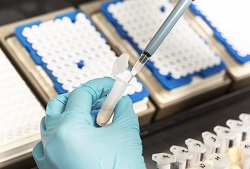April 2020
Authors: Elie Gerschel, Christian Gollier, Olivier Gossner
Contact: ogossner@gmail.com
………………………
Lockdown exit and control of the Covid-19 epidemic: group tests can be more effective
Summary
The lack of efficient mass testing tools for SARS-CoV-2 virus that causes Covid-19 has contributed to the accelerated spread of the epidemic. Infected people are unaware that they are spreading the disease during the incubation period as well as in asymptomatic cases or cases with mild symptoms. To limit the number of victims of the epidemic, the strategy adopted by most affected countries is therefore social distancing or complete lockdown, a strategy that can only be beneficial for a limited time, given its economic and social cost. Today, the most feasible way out of the stalemate requires widespread screening of the population. Such screening would make it possible to isolate infected people and allow others to leave the lockdown. However, production capacity for SARS-CoV-2 tests is limited. Although production is increasing, it will not allow for sufficiently systematic and frequent screening to permit the lifting of health restrictions. We here describe how the usefulness of each test can be amplified by applying it to the mixture of samples from several individuals. This technique, called group testing, has already been successfully applied on SARS-CoV-2. We show how the group-test method must be calibrated to maximize the usefulness of each available test.
- To stop the spread of the epidemic, lockdown is now the core strategy of the most affected countries, but it is too costly to be sustainable. Mass screening could break the deadlock.
- The lack of tests currently limits this screening to a few tens of thousands of people per week in France, and the production of tests is not increasing fast enough to envisage an exit from the current lockdown.
- The group-testing technique multiplies the usefulness of each test. A group test, carried out on the mixture of samples taken from n people, when it proves negative, makes it possible to end the lockdown for all members of the group.
- The method requires precise calibration of group sizes to optimize its efficiency. It is most useful when prevalence is low, i.e. the infected proportion of the population at the time of testing is low.
- Under a prevalence scenario of 2%, each test can allow, on average, 18 people to exit lockdown and return to work.
- The usefulness of the tests justifies massive investment in increasing production, particularly as group tests significantly increase their effectiveness.
- Our approach demonstrates the value of the proven method of group testing, which needs to be experimented with on a larger scale.
In the press
- CRES (Paca), 10/04/2020 – Déconfinement et lutte contre l’épidémie de Covid-19 : grouper les tests pour plus d’efficacité
- Les Echos, 02/04/2020 – Déconfinement: les propositions de deux économistes
- Le Monde, 01/04/2020 – Nous pouvons « accroître notre capacité de dépistage sans attendre la fabrication de nouveaux tests »
- Washington Post, 31/03/2020 – Coronavirus : testing groups
- Forbes, 29/03/2020 – Group Testing Is Our Surefire Secret Weapon Against Coronavirus
Ce message est également disponible en :  French
French



